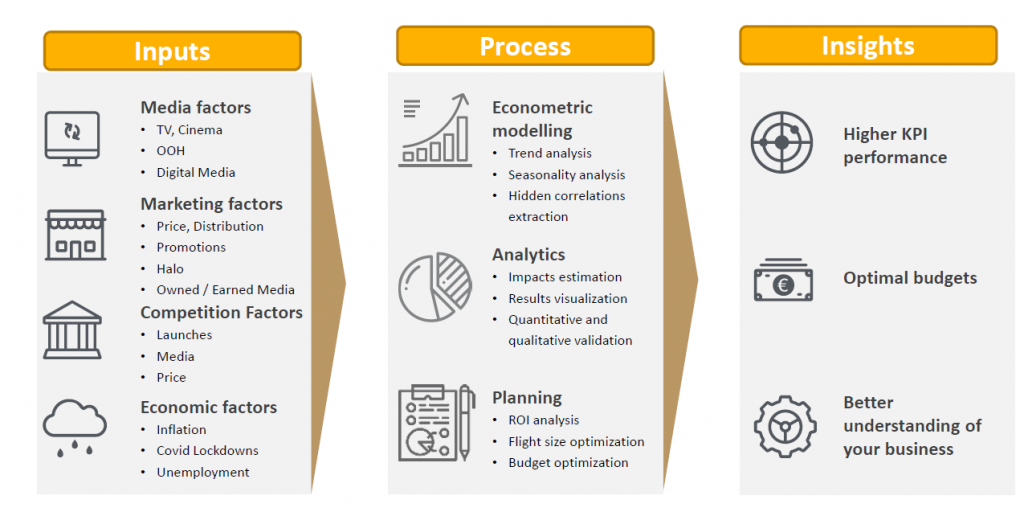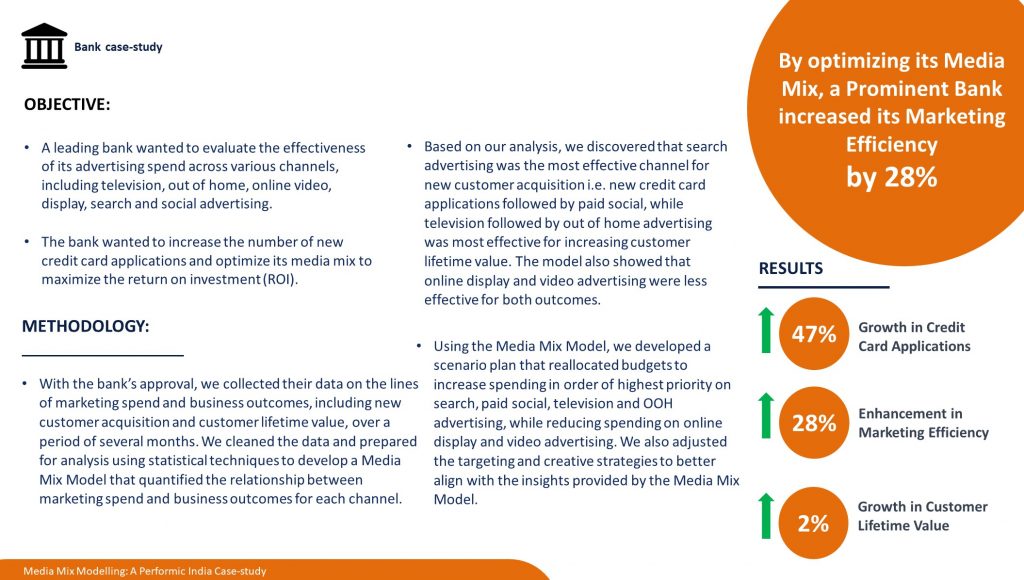


Cracking the Code with the Power of Analytics: How Media Mix Modelling Can Revolutionize Your Advertising Strategy by Cyrus Shroff
In today’s hyper-competitive business environment, effective advertising is more critical than ever. With so many channels and platforms available to reach customers, businesses need to be strategic in how they allocate their advertising budgets. This is where Media Mix Modelling (MMM) comes in – a powerful analytics solution that can revolutionize your advertising strategy.

Media Mix Modelling is a statistical technique that uses historical data to determine the optimal allocation of advertising spend across different media channels. It involves analyzing data on past marketing campaigns, such as sales data and advertising expenditures, to identify which media channels are most effective in generating sales or achieving other marketing objectives. Based on this analysis, MMM can help businesses determine how much budget to allocate to each channel to achieve the desired outcome.
The key advantage of MMM is that it takes a holistic view of the marketing mix, rather than focusing on individual channels in isolation. By analyzing the interaction between different channels, MMM can help businesses understand how different media work together to influence consumer behavior. This allows businesses to identify which channels are most effective at different stages of the customer journey and adjust their marketing strategy accordingly.
There are several reasons why Media Mix Modelling is important for businesses looking to improve their advertising strategy:

Media Mix Modelling involves the following steps:
The mathematical aspect of Media Mix Modelling involves using regression analysis to model the relationship between marketing metrics, such as sales or brand awareness, and media spend across different channels.
To incorporate a snapshot of the mathematical aspect to the Media Mix Modelling process, you could create a scatter plot or line graph of the historical data showing the relationship between the marketing metrics and media spend. This would provide a visual representation of the data and give an indication of whether there is a linear or non-linear relationship between the variables.
Additionally, you could use a simple linear regression model to estimate the relationship between the marketing metrics and media spend. This would involve fitting a straight line to the data and using the slope and intercept of the line to determine the impact of media spend on the marketing metrics.
Finally, you could use more advanced regression techniques, such as time-series regression or multi-level modelling, to account for the complex interactions between different media channels and other factors that may influence the marketing metrics. These techniques would provide a more accurate and comprehensive understanding of the relationship between media spends and marketing outcomes.
Overall, incorporating a snapshot of the mathematical aspect of Media Mix Modelling would provide valuable insights into the relationships between media spend and marketing metrics, helping businesses to optimize their advertising strategies and maximize their return on investment.

If you wish to discover further on developing a suitable Media Mix Model for your brand, don’t hesitate to contact us at growth@performics.com.
Cyrus Shroff, Head of Banking & Financial Services